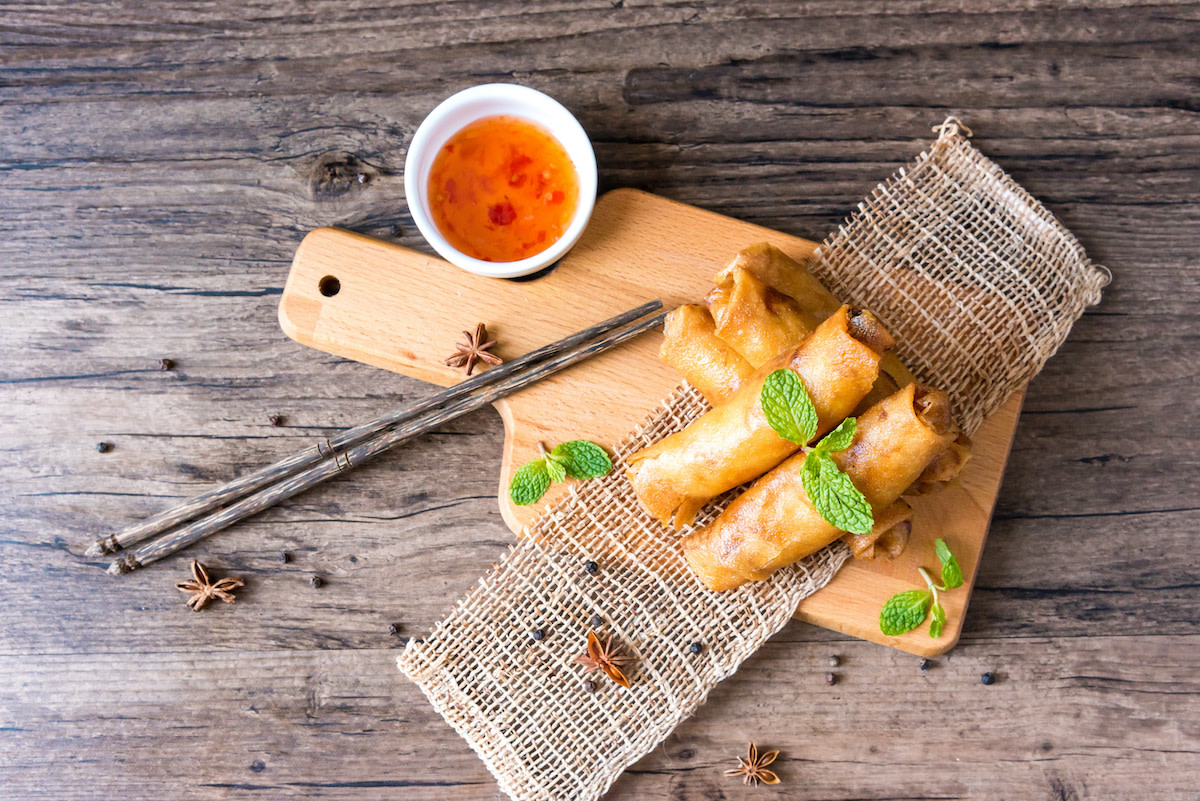Spring Rolls vs. Egg Rolls: 3 Essential Differences
Written by MasterClass
Last updated: Jun 7, 2021 • 2 min read
Spring rolls and egg rolls are both popular Chinese appetizers, but one has traditional Chinese roots while the other emerged from American Chinese cooking.
Learn From the Best
What Are Spring Rolls?
A spring roll is a rolled appetizer first created in China. Its wrapper is made from flour and water, and it can be filled with various combinations of vegetables and meat. Spring rolls can be served fried or non-fried. The name "spring roll" derives from the appetizer’s origins as a dish served for Chinese New Year banquets, which signal the beginning of the spring season.
Different Asian countries have their own variations on the spring roll, with one of the most popular variants hailing from Vietnam. The Vietnamese spring roll—commonly called a “summer roll”—is an uncooked, fresh spring roll made with a rice-paper wrapper. You might find summer rolls in Vietnamese restaurants or in the sushi section at your local grocery store.
What Are Egg Rolls?
An egg roll is a variation of the spring roll that originated in American Chinese cuisine. In addition to flour and water, its wrapper batter also contains egg. Egg rolls are always fried and have a thicker, bumpier outer texture than spring rolls. While the egg roll’s exact origin is not authenticated, the most widespread belief is that a Chinese immigrant chef named Lum Fung invented the egg roll in 1930s New York City.
Spring Roll vs. Egg Roll: What’s the Difference?
Spring rolls and egg rolls differ in preparation, ingredients, and appearance.
- 1. Preparation: Spring rolls can be fried, steamed, or baked. Egg rolls are always fried.
- 2. Dough ingredients: Water and flour (wheat flour or rice flour) are the two ingredients for spring roll wrapper dough. Egg roll wrapper dough requires water, wheat flour, and egg—it’s the egg that gives an egg roll its thick, crunchy texture.
- 3. Appearance: Spring roll wrappers, whether fried or non-fried, are always thinner than egg roll wrappers. Since they are made from a lighter dough, they’re semi-translucent, and they have a flaky, crispy texture when fried. Egg roll wrappers have a thick, crunchy wrapper. When you bite into an egg roll, you’ll notice the wrapping has a crunchy outer layer and a chewy inner layer.
Common Fillings for Spring Rolls and Egg Rolls
Spring roll fillings vary depending on geographic location, but combinations of vegetable and meat ingredients include mixes of bamboo shoots, bean sprouts, cabbage, shredded carrots, shrimp, ground pork, and chicken. Summer rolls—Vietnamese spring rolls—are often filled with vermicelli noodles, carrots, cucumbers, lettuce, bean sprouts, shrimp, pork, and herbs like Thai basil, mint, or cilantro.
Egg roll fillings also vary, but the most common type of egg roll found in American-Chinese restaurants contains cabbage, shredded carrots, and roast pork.
3 Types of Dipping Sauce for Spring Rolls and Egg Rolls
Dipping sauces can add extra flavor to egg rolls and spring rolls. Common dipping sauces for the appetizers include:
- 1. Sweet sauces: Sweet and sour sauce, duck sauce, plum sauce, and hoisin sauce (peanut sauce) are popular additions to spring rolls and egg rolls.
- 2. Savory sauces: Dip spring rolls and egg rolls into soy sauce, Worcestershire sauce, or Vietnamese fish sauce (nước chấm) for added flavor.
- 3. Spicy sauces: Hot mustard and sriracha can add spice to spring rolls and egg rolls.
Want to Learn More About Cooking?
Become a better chef with the MasterClass Annual Membership. Gain access to exclusive video lessons taught by the world’s best, including Niki Nakayama, Gabriela Cámara, Chef Thomas Keller, Yotam Ottolenghi, Dominique Ansel, Gordon Ramsay, Alice Waters, and more.
